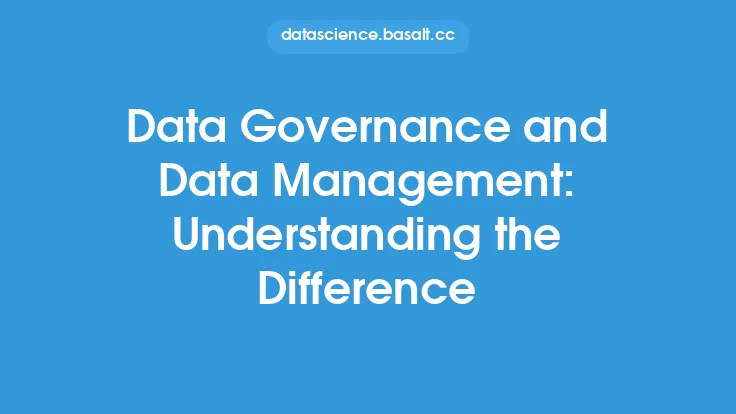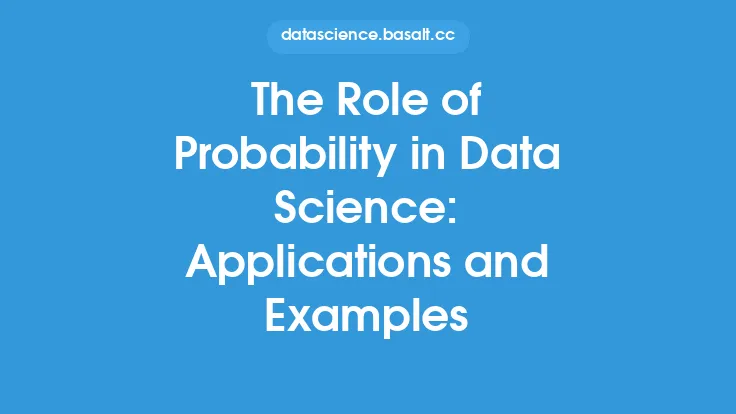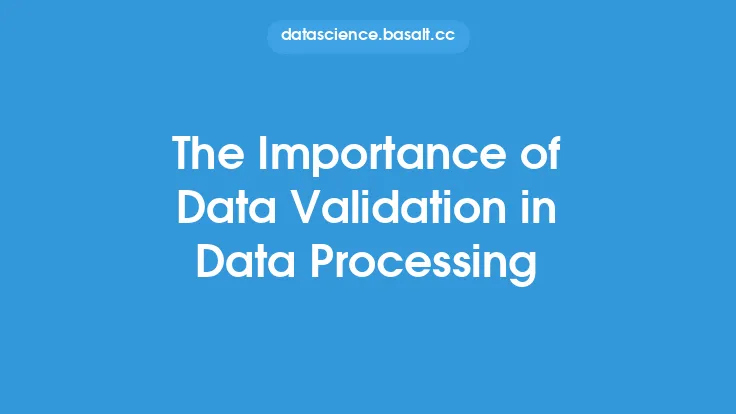Data processing is a crucial aspect of data engineering, as it enables the extraction of valuable insights and information from raw data. At its core, data processing involves a series of operations that transform raw data into a more meaningful and useful format. This process typically begins with data collection, where data is gathered from various sources, such as databases, files, or user input. The collected data is then processed using various techniques, including data cleaning, data transformation, and data reduction, to remove errors, inconsistencies, and irrelevant information.
What is Data Processing?
Data processing refers to the automated or manual process of collecting, manipulating, and transforming data into a more useful and organized format. This process involves a series of steps, including data input, data processing, data storage, and data output. Data processing can be performed using various tools and technologies, including computer software, programming languages, and data processing frameworks. The primary goal of data processing is to extract valuable insights and information from raw data, which can be used to inform business decisions, improve operations, or gain a competitive advantage.
Key Components of Data Processing
There are several key components of data processing, including data input, data processing, data storage, and data output. Data input refers to the process of collecting data from various sources, such as databases, files, or user input. Data processing involves the manipulation and transformation of data into a more useful format, using techniques such as data cleaning, data transformation, and data reduction. Data storage refers to the process of storing processed data in a database or file system, where it can be retrieved and analyzed as needed. Data output refers to the process of presenting processed data in a meaningful and useful format, such as reports, charts, or graphs.
Data Processing Techniques
There are several data processing techniques that can be used to manipulate and transform data, including data cleaning, data transformation, and data reduction. Data cleaning involves the removal of errors, inconsistencies, and irrelevant information from the data. Data transformation involves the conversion of data from one format to another, such as aggregating data or converting data types. Data reduction involves the reduction of data volume, such as sampling or aggregating data, to improve data quality and reduce storage requirements.
Data Processing Tools and Technologies
There are several data processing tools and technologies that can be used to perform data processing tasks, including computer software, programming languages, and data processing frameworks. Popular data processing tools and technologies include spreadsheet software, such as Microsoft Excel, programming languages, such as Python and R, and data processing frameworks, such as Apache Hadoop and Apache Spark. These tools and technologies provide a range of features and functionalities that can be used to collect, manipulate, and transform data, including data input, data processing, data storage, and data output.
Conclusion
In conclusion, data processing is a critical aspect of data engineering, as it enables the extraction of valuable insights and information from raw data. By understanding the basics of data processing, including the key components, techniques, and tools and technologies, data engineers can design and implement effective data processing systems that meet the needs of their organizations. Whether it's data cleaning, data transformation, or data reduction, data processing plays a vital role in transforming raw data into a more meaningful and useful format, which can be used to inform business decisions, improve operations, or gain a competitive advantage.




